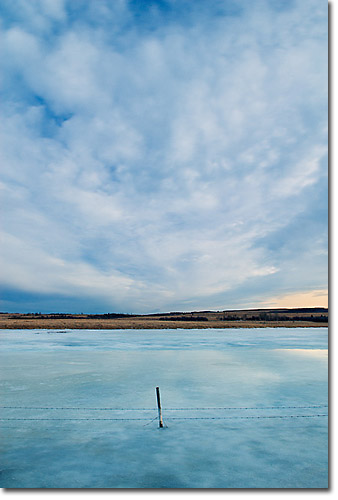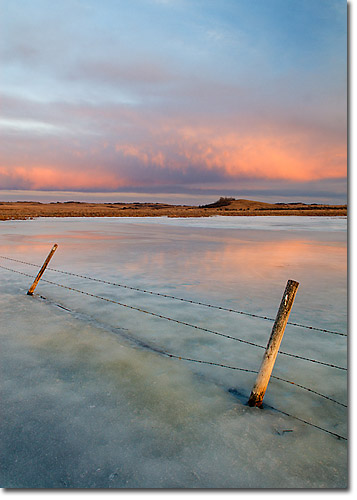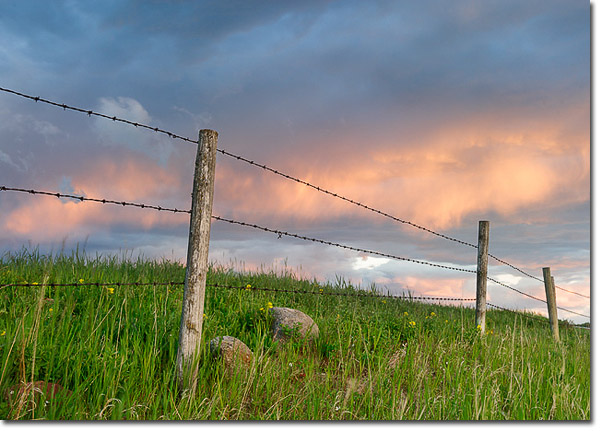To Tweet or Not to Tweet |
There has been a lot of talk in the last couple of years or so about whether photographers should take their business online to social media platforms. Companies that are not successfully working through channels like Facebook, Twitter, LinkedIn, or delivering content through their own blogs and online forums are deemed dinosaurs by social marketing enthusiasts. While there are examples of photographers who have leveraged social media to deliver their business to increasing numbers of people, this does not mean this form of online marketing is for you. ‘To tweet or not to tweet’ will depend a great deal on your objectives and your personality.
A photographer recently told me, “You have to get on Twitter.” I had my doubts that opening up an account on Twitter would result in an inpouring of friends and supporters all eager and waiting with poised, tweeting-fingers to read what I would post next. The truth is, I am not a good example of how to use social media to market a business. I feel rather ambivalent about spending the time required online to effectively use these media platforms. But while I am still deciding on how I will use social media for my business, my research has revealed some of the main characteristics of photographers who successfully use social media to build their business. So if these traits describe you, then you just might be perfectly suited to be a Tweeting Photographer!

Be Yourself
The most exciting aspect to marketing through social media platforms is the opportunity to be yourself: your personality will become your brand whether you like it or not. How you are perceived will be determined by the cumulative bits of information found all over the web and not merely by who you say you are on your website’s bio page. The internet has a memory longer than an elephant’s: every time you post, comment, lurk or are mentioned by others on the web, there is a trail of digital debris that stays behind and is ‘findable’ by anyone looking for it. While some have used this scattered array as a means to sell a product to many consumers over time (Chris Anderson’s ‘long tail’), the point is that once something is published to the public domain, it is beyond your control.
The good news is that the power of being yourself comes into play because of the nature of social media. Social media are all about connecting and sharing between real people. People are looking to discuss ideas, exchange information and learn from people just like themselves. As you spend time online in these communities adding value to the conversations occurring in these communities, you are also building your personal brand. Your ability to match up with like-minded peers is unprecedented; you are essentially on a level-playing field with large companies. Sure, a multinational may have more money to hire staff to monitor the web for opportunities, but when it comes down to it, they have a website and you have a website. They have a blog and you have a blog. In other words, consumers are shopping in a big, open air marketplace where anyone can set up a stall. You have just as much chance of being found as a company with more marketing resources.
The downside of this (for some photographers) is that you must put yourself out there. Be prepared to forgo a little privacy and anonymity in exchange for honest connections with your online community. This does not mean of course sharing information that is inappropriate – who cares to know what you ate for dinner or the details on a fight with your spouse from the day before? By presenting and sharing useful information in an authentic way, you will create long-lasting relationships and build trust with your audience as well as strengthen your personal brand.

But Be Interesting
In this fast-paced world, you are competing for snippets of people’s time with many other people. Just joining an online community like Flickr or Facebook will not guarantee followers. Don’t waste people’s time: post information that is worth their attention and adds value for them. Being interesting also means that you must know who your audience is and what they wish to learn. Ideally, if you are being your authentic self, you will naturally attract people who wish to hear what you want to talk about. Bringing your community interesting, reliable, quality content builds trust and strengthens online relationships which is critical to the long term success of your business. And even though viral marketing can give you a boost in popularity, the successful photographers plan to be around for the long term gains.
If you are trying to build a community around you, then you also need to do your research on what you can offer that is unique as well as useful. Just copying someone else’s model of success probably won’t cut it. One thing that is generally agreed on is to avoid in-your-face advertising. Since the main point of social media is to share and connect, the hard sell is a tactic that does not go over very well. Instead, your focus should be on offering something of interest, providing thoughtful comments or finding solutions for your audience. If they like what they receive, they will spend time learning about you and your business, and a match may be found between the kind of products you offer and the consumer who is looking for them.
Have a Passion for Connecting
It goes without saying that personalities who enjoy the quick flow of information and connections that occur in social media sites are the people who will be best suited to use these platforms to spread the word on their business. If you don’t enjoy networking, then find another way to get your message out! Photographers who enjoy ‘meeting’ people online or in person build linkages; they connect people to products or solutions and are connected in turn to products or solutions for which they are searching. Photographers who hoard information will find the flow of information coming their way drying up. As well, part of the passion of connecting is to do so in a timely manner. With so many other options out there, community members can find what they need elsewhere quite easily. So be prepared to spend A LOT of time visiting other community members’ sites, passing along interesting and useful information and sharing your own thoughtful comments.

Generalist vs Specialist
Not many of us nature shooters make a living off just our images anymore. Most of the photographers I know use their images to market collateral products in areas such as education, information or inspiration. These products may be informative blogs, downloadable products or workshops and seminars. The successful self-employed businessperson always was hard-working and financially prudent, but now the successful photographer is also adept at turning great images into other products.
This brings into play a whole new set of skills. Successful photographers are not only computer literate but also multi-media literate. More and more photographers are branching out into audio and video to supplement their images and bring more exciting experiences to their audiences. Self-made eBooks are now ubiquitous. This means that competence in editing programs for audio, video and graphic design is critical. As well, clear communication is key in social media. The photographer who can supplement his images with a compelling story behind the photographs makes it easier to convey his brand. As part of communication, your products must be translatable across multiple technologies and devices; the modern photographer uses technology to communicate and connect with her communities.
Conclusion
There is no ‘one size fits all’ when it comes to the new world of building a business in photography. While there are significant opportunities available in social media platforms to make lasting relationships with like-minded people, whether you will be able to build a successful business depends in part on your skills and in part on your personality. Turning a shrewd eye to community members’ needs in the marketplace along with a desire to build long term, personal relationships with real people online are minimum requirements for success.
Learn More!
Why Photographers Should Love Twitter by James Brandon, Digital Photography School
To Tweet or Not to Tweet, Success Magazine
Twist Image Blog by Mitch Joel, author of the book Six Pixels of Separation
The Mix – The Marketing Formula of Successful Photographers, PhotoShelter blog
Some thoughts by Chase Jarvis on his blog
Share your own helpful links in a comment!
Comments on NPN nature photography articles? Send them to the editor. NPN members may also log in and leave their comments below.
 Samantha Chrysanthou was born in Lethbridge, Alberta. After moving for a period of time to northern Alberta, she returned in 2000 to southern Alberta to pursue a law degree in Calgary. After becoming a lawyer, Samantha began to realize her heart was more engaged in capturing the beauty of the landscape around her than debating the nuances of legal arguments in court. She has since left law to pursue writing and photography full-time. She particularly enjoys shooting the prairies, foothills and Rocky Mountains within an hour or so of her home in Cochrane, Alberta. Visit Samantha's website to view more of her work at www.chrysalizz.smugmug.com.
Samantha Chrysanthou was born in Lethbridge, Alberta. After moving for a period of time to northern Alberta, she returned in 2000 to southern Alberta to pursue a law degree in Calgary. After becoming a lawyer, Samantha began to realize her heart was more engaged in capturing the beauty of the landscape around her than debating the nuances of legal arguments in court. She has since left law to pursue writing and photography full-time. She particularly enjoys shooting the prairies, foothills and Rocky Mountains within an hour or so of her home in Cochrane, Alberta. Visit Samantha's website to view more of her work at www.chrysalizz.smugmug.com.